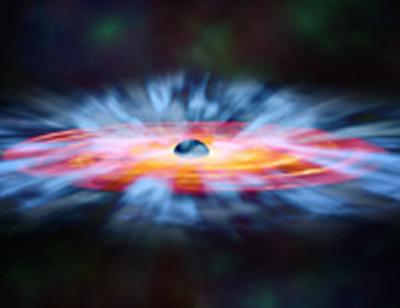
Scientists, including Dr Matthew Middleton from the University of Southampton, have for the first time mapped the behaviour of gas approaching a black hole by studying vibrations of the light it fires out.
As material spirals into a black hole, it emits X-rays that echo and reverberate as they interact with nearby gas. The researchers used the European Space Agency’s observatory XMM-Newton to track the echoes of the X-rays thrown out into space by a black hole at the core of an active galaxy named IRAS 13224-3809.
Although most black holes are too small on the sky for us to resolve their immediate
surroundings, we can explore these mysterious objects by watching how matter behaves as it nears, and falls into them.
“Everyone is familiar with how the echo of their voice sounds different when speaking in a
classroom compared to a cathedral – this is simply due to the geometry and materials of the
rooms, which causes sound to behave and bounce around differently,” explains William Alston of the University of Cambridge, and lead author of the new study.
“In a similar manner, we can watch how echoes of light propagate in order to map out the
geometry of a region and the state of a clump of matter before it disappears into a black hole. It’s a bit like cosmic echolocation.”
As well as using the dynamics of in-falling gas to determine its geometry, the international team were also able to determine the black hole’s mass and spin. This in-spiralling material forms a disc as it falls into the black hole. Above this disc lies a region of very hot electrons – on the order of a billion degrees – called the corona. The researchers expected to see the reverberation echoes they used to map the region’s geometry, but also spotted something unexpected: the corona changed in size incredibly quickly, over a matter of days.
Dr Middleton of the University of Southampton’s School of Astrophysics added: “The light echoes we observed changed as the corona’s size changed. This meant we could get much better information on how the black hole was spinning and its mass than we would have done had the corona not changed in size.”
The study used the longest observation of an accreting black hole ever taken with XMM-Newton, 16 full spacecraft orbits over 23 days, allowing the researchers to comprehensively model the echoes.
Measuring the mass, spin and accretion rates of a large sample of black holes is key to understanding gravity throughout the cosmos, and, how a galaxy’s central black hole is linked to how its host galaxy forms and evolves over time.
The findings have been published in the journal Nature Astronomy.
Dr Middleton concluded: “”This work demonstrates quite clearly that the future of studying black holes very much relies on looking at how they vary – this will be the focus of a number of new missions launching in the next 10 years which will usher in a new age of understanding these exotic objects.”








